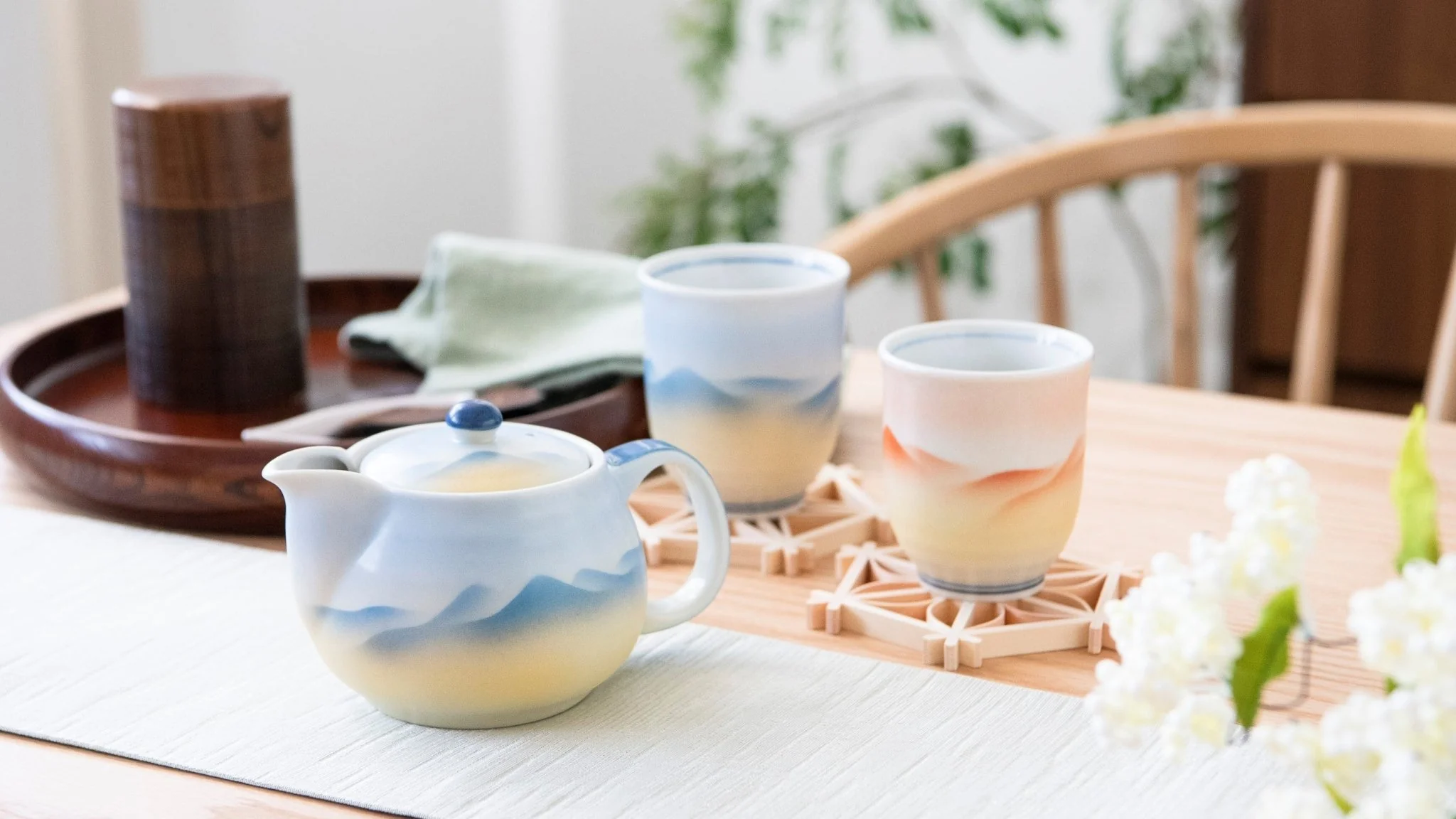Exploring Authentic Japanese Tea Sets: Ceremony and Ritual
Immerse yourself in the beauty and tradition behind Japanese tea ceremonies. From the intricate design of antique matcha bowls to the measured movements of the tea master, this iconic ritual embodies Japanese ideals of harmony, respect, and tranquility. In this article, you’ll learn about the origins and symbolism of the tea ceremony. Discover the specialized equipment used, from the bamboo whisk to the ceramic tea caddy. We’ll explore the world’s rarest and most prized Japanese teas and why the best varieties fetch exorbitant prices at auction. You’ll also gain insight into what makes antique Japanese tea sets so valuable. Let this article transport you to a serene realm of ceramic, tea, and timeless tradition.
Exploring the beauty and tradition of the Japanese tea ceremony becomes even more enriching when seeking to purchase authentic Japanese tea sets for an enhanced tea experience. For those in search of such sets, we highly recommend visiting https://www.teasetbox.com. This website offers a curated collection of exquisite Japanese tea sets, ranging from classical to modern designs.
The History and Significance of the Japanese Tea Ceremony
The Japanese tea ceremony, also known as ‘Chanoyu’ or ‘Sado’, has a long and storied history dating back to the 9th century when tea was first introduced to Japan from China. Over the centuries, the preparation and drinking of green tea was transformed into a highly ritualized art form that emphasizes harmony, tranquility, respect, and purification.
The origins of the tea ceremony can be traced back to Buddhist monks who would drink tea to aid meditation. In the 12th century, the monk Eisai introduced powdered green tea to Japan after studying Chan Buddhism in China. He touted tea for its medicinal benefits.
By the 16th century, Sen no Rikyu established the set of rituals and principles that would define the Japanese tea ceremony still practiced today. Rikyu advocated ‘wabi-cha’ ideals of rustic simplicity, humility, and the beauty found in imperfection.
All elements of the tea ceremony reflect these Zen Buddhist-inspired values, from the simple thatched-roof tea house to the deliberately imperfect handcrafted pottery and utensils. Even the choreographed preparation procedures emphasize meticulous care, purity, and tranquility.
Beyond just the act of drinking tea, the ceremony represents the creation of peace through sharing a bowl of tea. It is meant to strip away the superficial, so one can experience the sacredness in ordinary moments shared with others.
Today, knowledge of the tea ceremony is considered an important part of traditional Japanese culture and education. Though less commonly practiced in daily life, it is still studied and preserved as an important art form and means of cultural connection.
Unique Equipment Used in the Japanese Tea Ceremony
The Japanese tea ceremony, also known as Chanoyu or Sado, makes use of specialized equipment and utensils. These tools are essential parts of the ritualistic preparation and presentation of matcha green tea.
The chashaku is a carved bamboo tea scoop used to transfer the powdered tea from the tea caddy to the tea bowl. It is designed to hold just the right amount of matcha for a serving.
The tea caddy (natsume) is a lacquered, often decorative container used to store the matcha powder. There are summer and winter versions, with differing humidity control.
The tea bowl (chawan) is handmade from ceramic or wood and enhances the drinking experience. Unique shapes, glazes, and designs make each one a work of art.
The whisk (chasen) has flexible bamboo tines to briskly mix the tea and hot water together to achieve the proper consistency.
A special cloth called a chakin is used to wipe the tea bowl clean before use.
The tea mat (chabana) provides a clean surface on which to place the tools.
Every movement and gesture is deliberate and follows strict protocols. The equipment embodies both function and esthetics, turning a simple cup of tea into a meaningful experience. Appreciating the craftsmanship and heritage of the tools is part of understanding the cultural importance of the Japanese tea ceremony.
The Art of Matcha: Japan’s Rarest and Most Prized Tea
Matcha is a finely ground green tea powder made from specially grown and processed tea leaves. It holds an exalted status in the Japanese tea tradition.
Matcha comes from the tea plant Camellia sinensis, like other green teas. However, the tea bushes used for matcha are covered for several weeks before harvest. This increases chlorophyll levels and creates a richer flavor.
Only the youngest, most tender tea leaves are hand-picked for matcha production. The stems and veins are removed, and the leaves are steamed and dried. Then the leaves are gently ground into a fine bright green powder.
Authentic matcha is made in Japan and is rare and costly to produce. Factors like the region, cultivation, harvesting, and grinding process influence the quality and taste.
The ritual of preparing and serving matcha is an integral part of the Japanese tea ceremony. It is carefully whisked in a bamboo bowl to a frothy consistency.
Matcha contains higher levels of antioxidants like EGCG than regular green tea. It also has a unique combination of L-theanine, caffeine, and other compounds that provide potential health benefits.
Sipping matcha offers a calming, meditative experience. The flavor is complex, with vegetal, umami, sweet, and bitter notes. The aroma is fresh and grassy.
Matcha exemplifies the refinement and attention to detail inherent in Japanese culture. From its cultivation to preparation, matcha follows precise traditions unchanged for centuries. No other tea is as cherished or revered.
What Makes Japanese Tea So Expensive?
There are several key factors that contribute to the high cost of premium Japanese tea:
Limited Production – Authentic Japanese green tea is only grown in select regions of Japan using traditional methods. This limits the supply, driving up prices. Many teas are produced in small batches at family-run farms over generations.
Labor-Intensive Cultivation – From the precise pruning of tea bushes to hand-picking each leaf at peak freshness, traditional Japanese tea cultivation involves meticulous, manual processes. No automation is used. This intensive labor increases production expenses.
Shade-Grown – Many prized Japanese green teas are “shade-grown,” meaning tea bushes are covered to control sunlight exposure. This slows growth and alters the tea’s flavor but requires additional labor and land costs.
Steaming and Processing – After harvest, leaves are steamed and dried through careful, artisanal methods to stop oxidation and preserve freshness. This hand-processing method also adds cost.
Premium Grade – The highest grades of Japanese green tea consist of only the youngest, most tender tea leaves and buds plucked each spring. These premium “first flush” leaves command exceptionally high prices.
Rarity – Some of the most coveted Japanese teas are produced in very small quantities, sometimes as little as a few kilograms per year. Their scarcity drives up the market price.
High Demand – As Japanese tea gains global recognition for its superior quality and health benefits, demand rises while supply remains limited. This lets vendors charge higher prices.
Branding and Luxury – Top Japanese tea brands market themselves as luxury, artisanal products. Consumers pay premium prices for the brand experience and prestige.
So while the cost may seem high, traditional Japanese teas reflect many uncompromising and painstaking steps that ultimately get passed onto the consumer. For tea aficionados, the refined flavors and cultural experience are well worth the price.
Are Authentic Japanese Tea Sets Valuable Collectibles?
Japanese tea ceremony sets hold significant cultural value and can also be quite valuable as collector’s items. Genuine antique Japanese tea sets often fetch high prices at auction houses and antique dealers. Several factors contribute to their collectability.
Age – Sets over 100 years old are most prized, especially from the Edo period (1603-1868). Older sets in good condition demonstrate excellent craftsmanship able to withstand time.
Provenance – Sets gifted by shoguns or made for nobility, or those with documentation showing previous owners increase value. Famous tea masters’ utensils are also sought after.
Maker – Renowned ceramic artists and kilns like Raku, Kenzan, Kiyomizu, Seto, and Karatsu produced exquisite tea wares. Pieces bearing their markings or styles command higher prices.
Condition – Sets must be in good shape structurally, with no repairs or touch ups. Crazing, stains, chips, or cracks significantly reduce value.
Completeness – Full sets with all original pieces intact are ideal. Incomplete sets or odd pieces sell for less.
Rarity – Unusual shapes, unusual clay bodies, or scarce decorative techniques make pieces more unique.
Esthetics – Beautiful glazes, elegant forms, and handcrafted artistry increase appeal. Sets that adhere to wabi-sabi principles may also be prized.
With proper appraisal and authentication, high quality antique Japanese tea ceremony sets can be quite valuable, both monetarily and culturally. Though not all sets will be worth large sums, their heritage provides meaningful value to tea practitioners and collectors.
Conclusion
As you have learned, Japanese tea sets hold great significance in the intricate rituals of the traditional tea ceremony. The equipment used in the ceremony is carefully chosen for its beauty and craftsmanship. Matcha, the powdered green tea used, is painstakingly grown and produced, making it highly prized and expensive. Authentic Japanese tea sets are valued for their artistry and connection to this cultural tradition. Though the ceremony requires practice and expertise, participating can provide a tranquil, meditative experience. Exploring the world of the tea ceremony can give you a window into centuries of Japanese art and culture. Whether you hope to collect tea sets or experience the ceremony yourself, a deeper understanding will enrich your appreciation of this captivating tradition.
Stay in touch with Discoverheadline.







